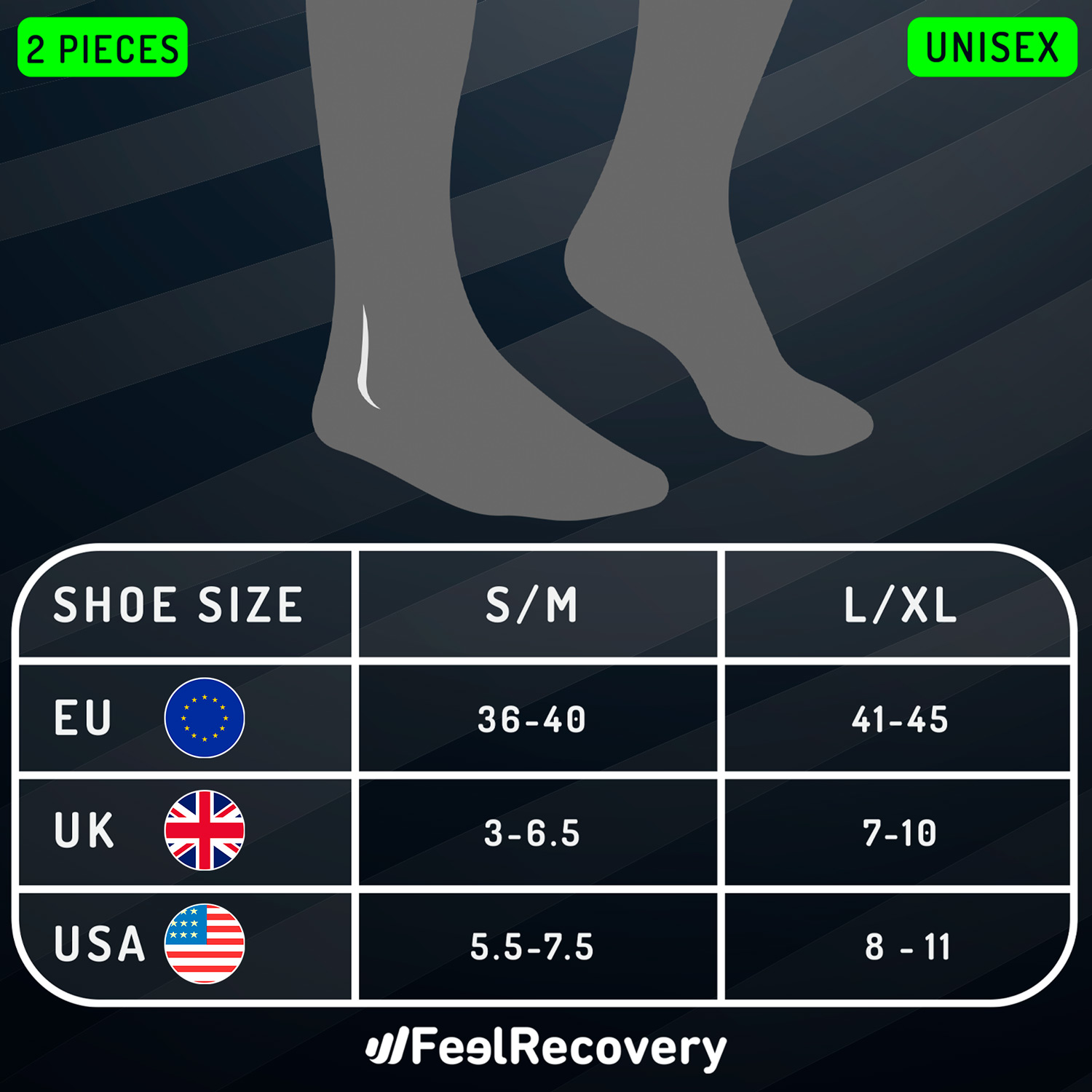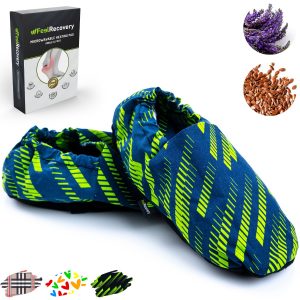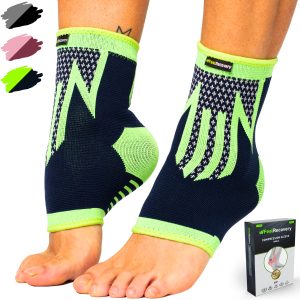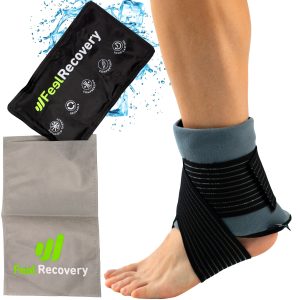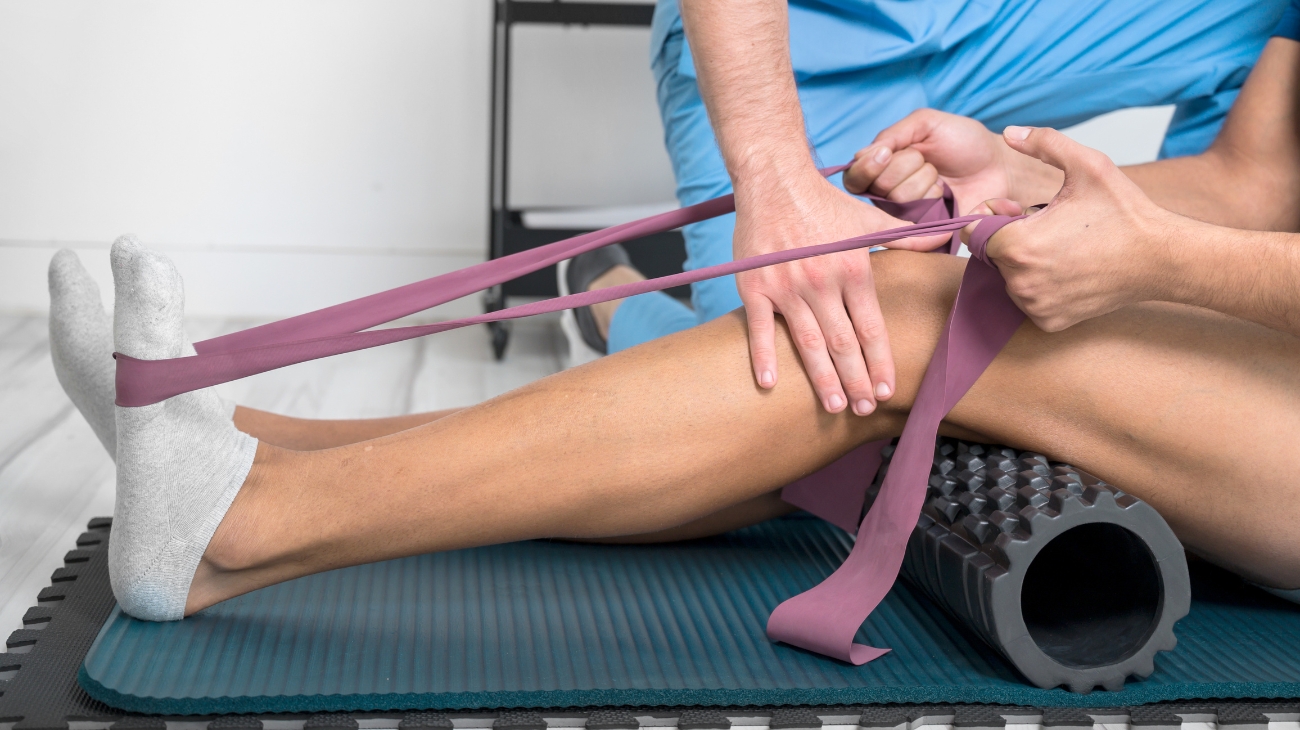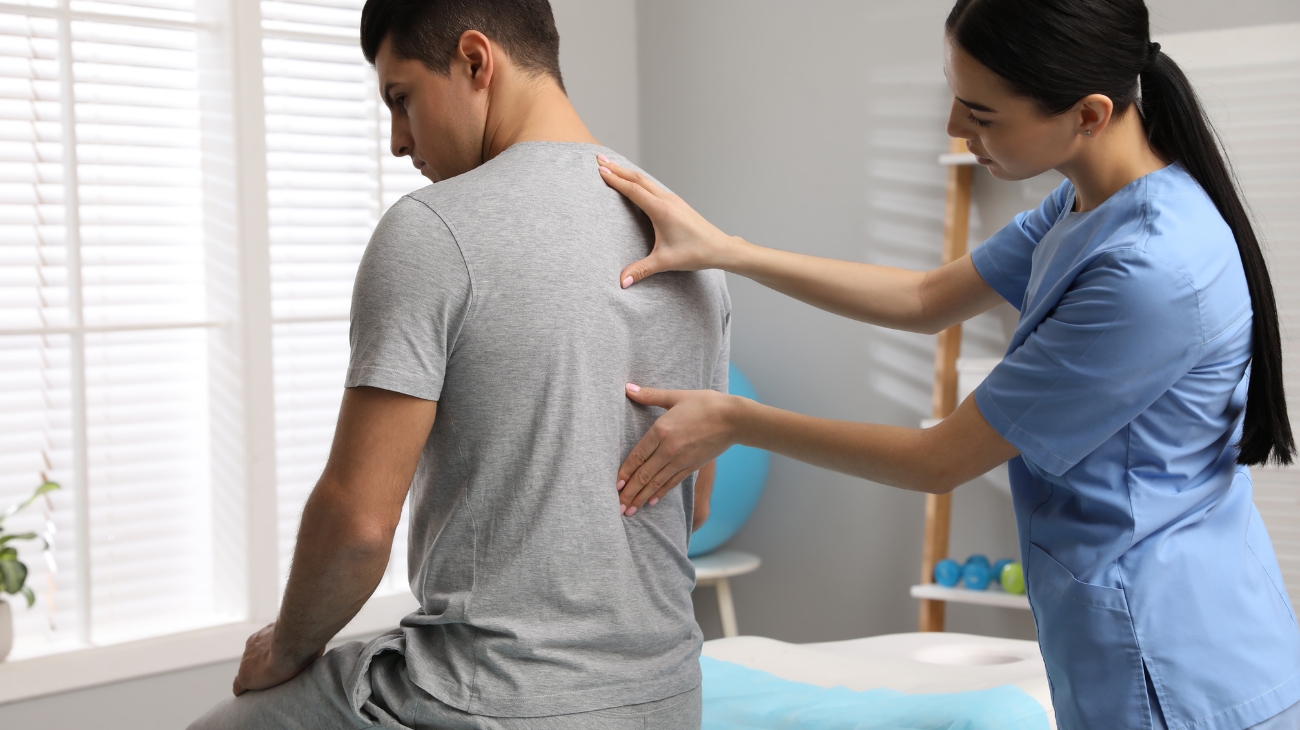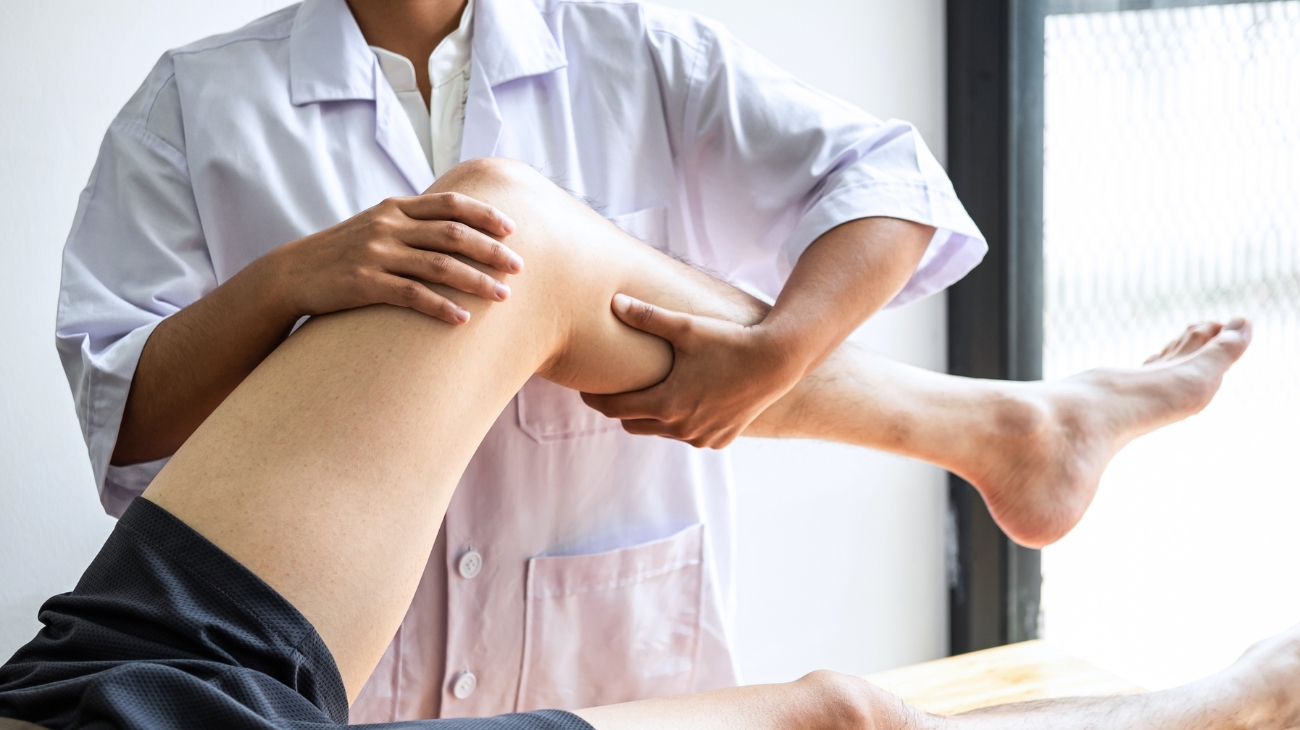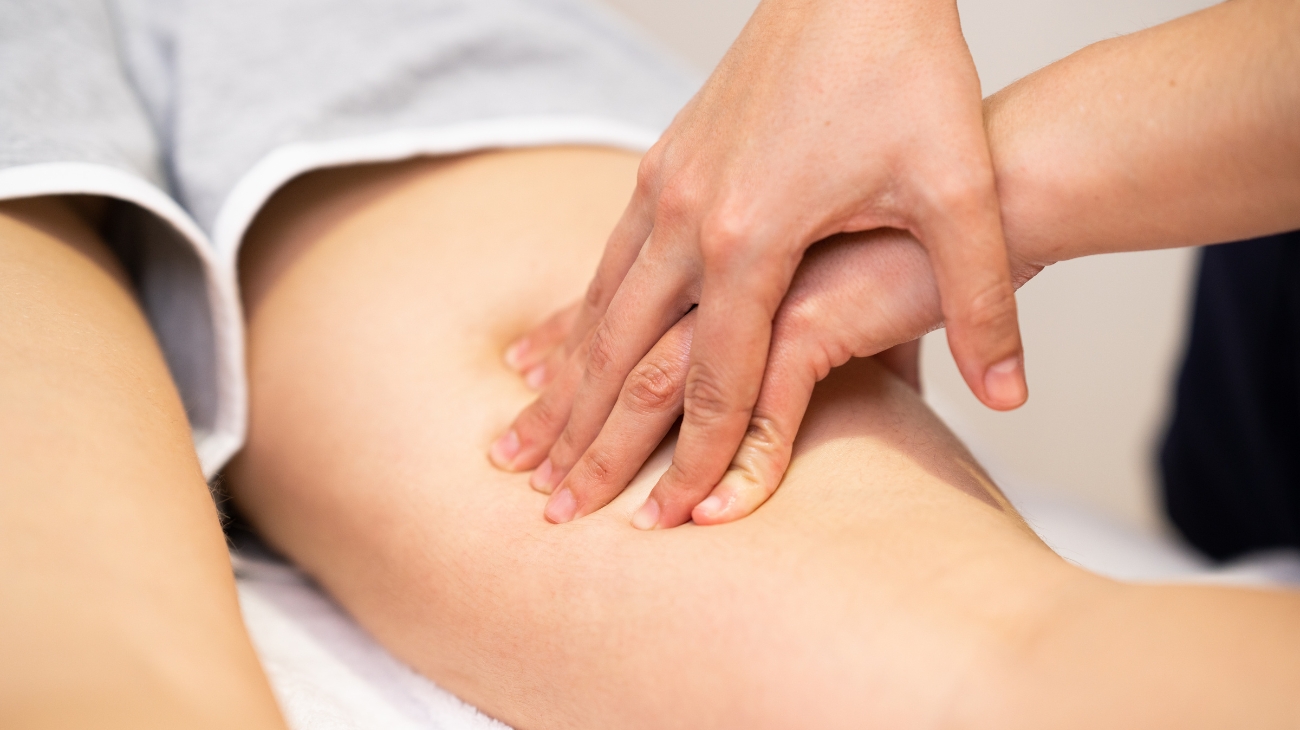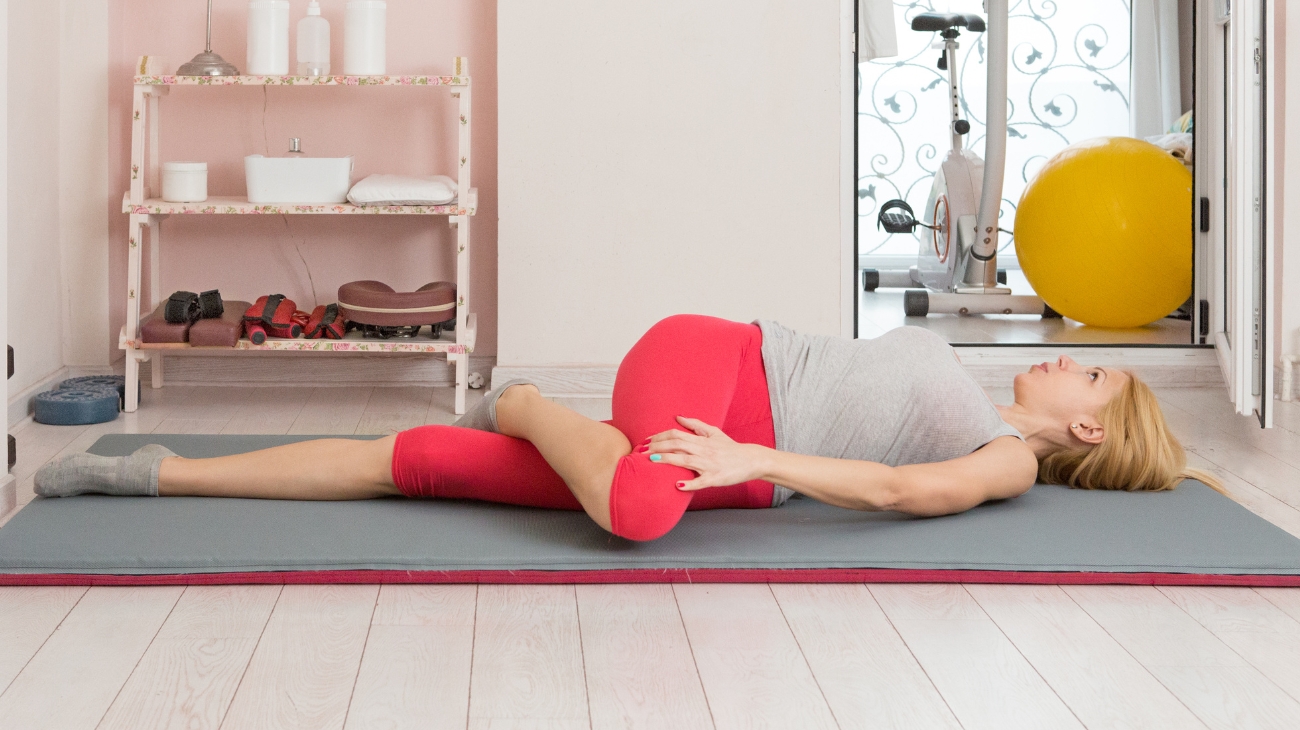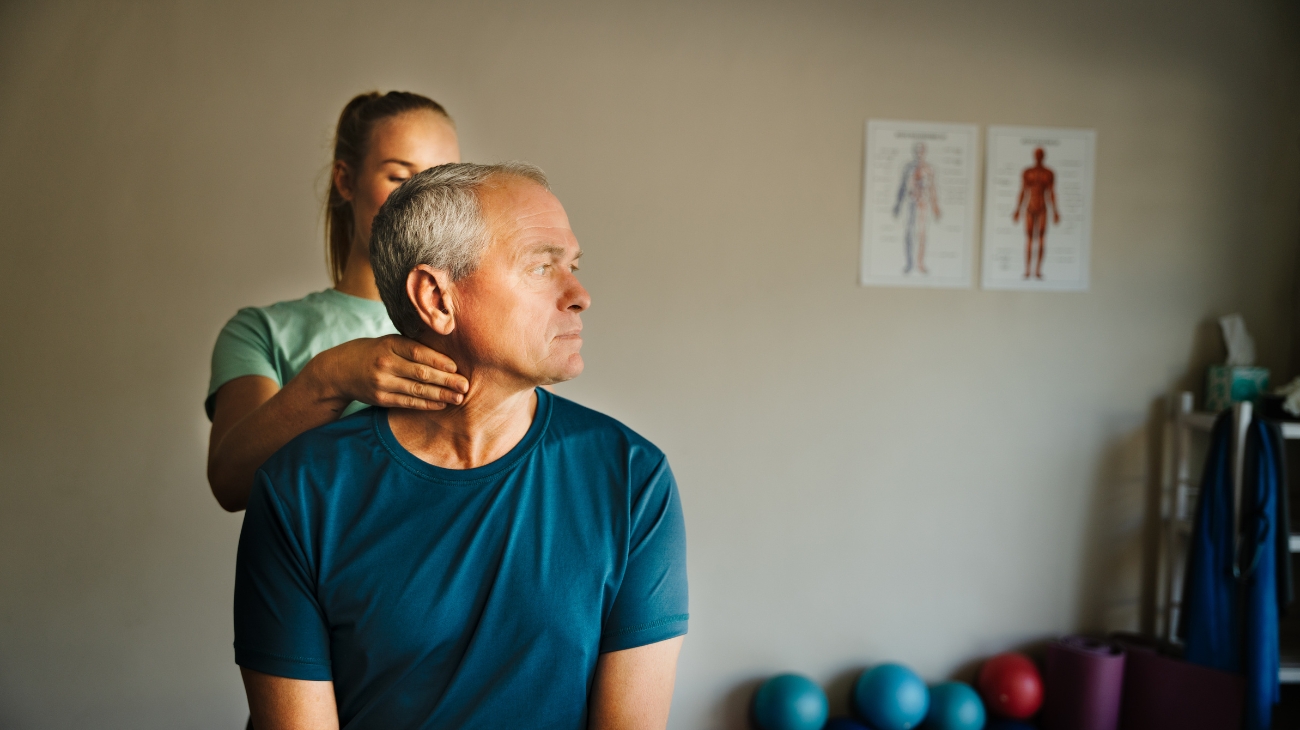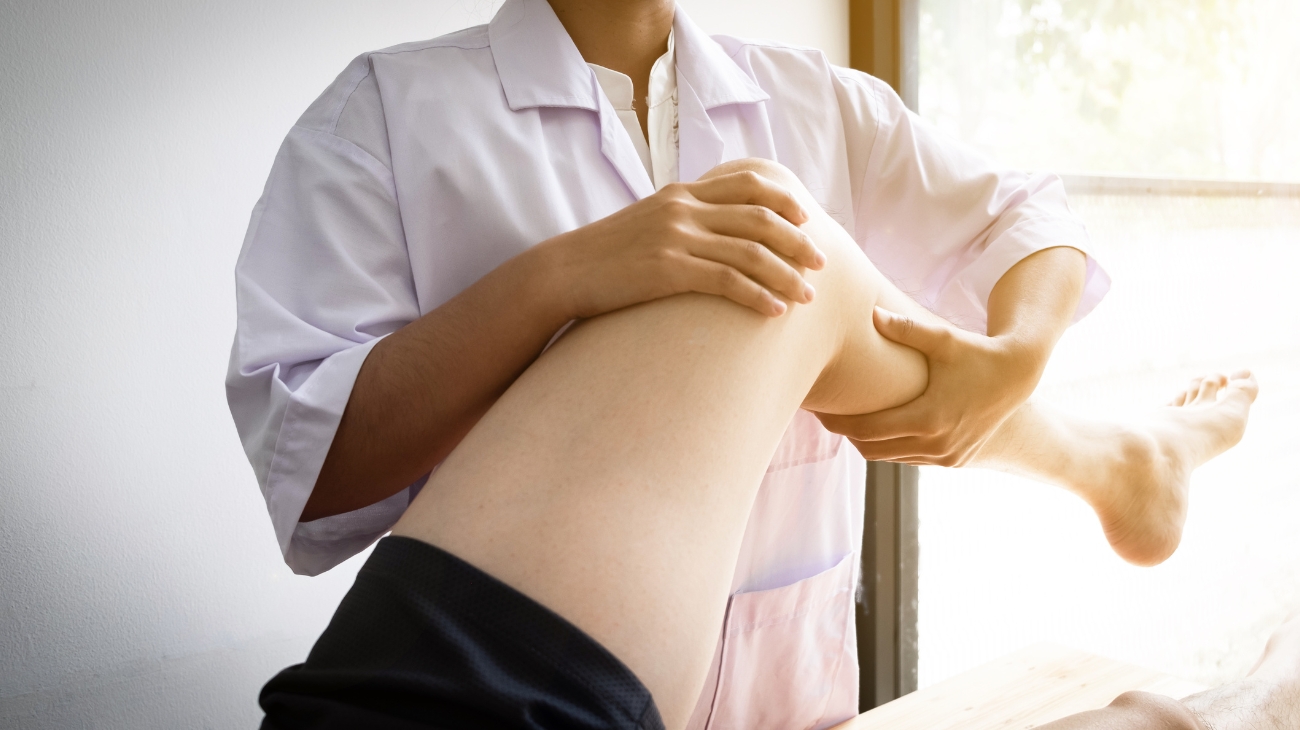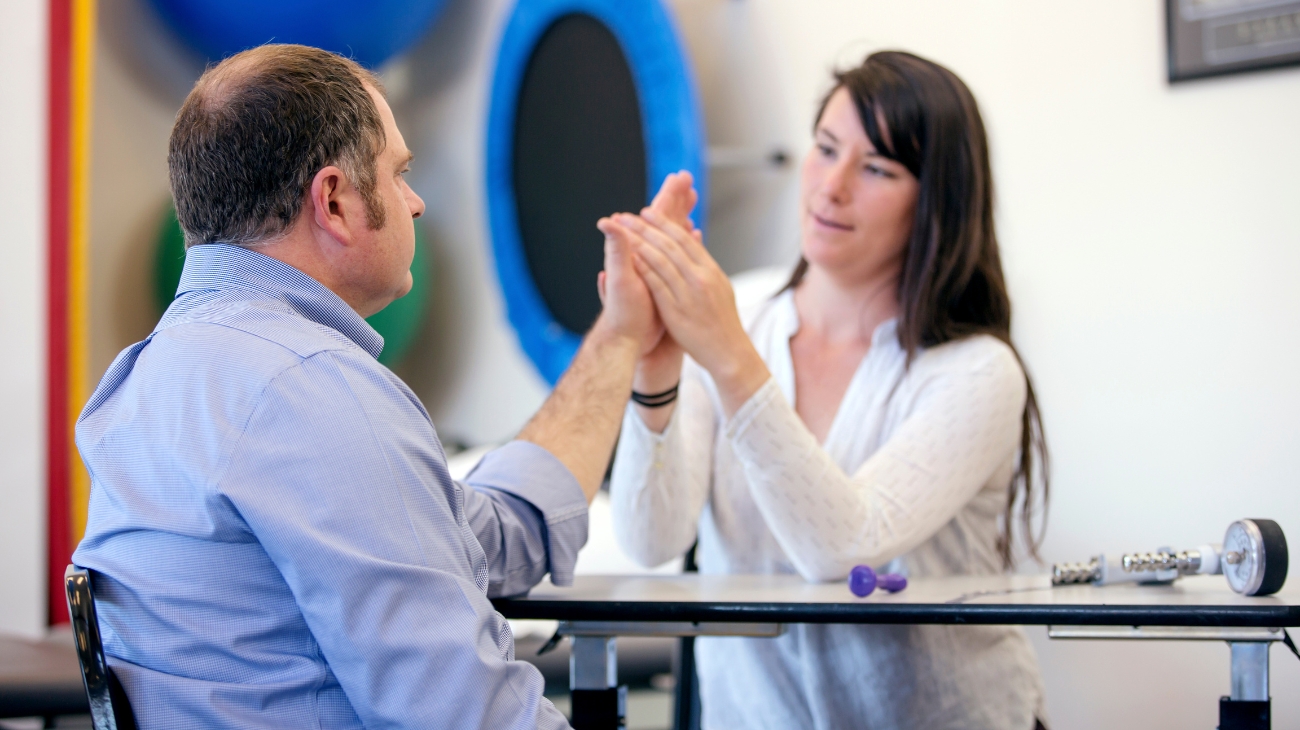It is crucial to know the best exercises for ankle rehabilitation because the ankle joint is a weight-bearing joint that is involved in many activities of daily living and sports. It is also susceptible to various injuries, such as sprains, strains, and fractures.
Proper rehabilitation exercises can help to decrease pain and swelling, improve ankle joint mobility and stability, and prevent future injuries. The best exercises for ankle rehabilitation are those that target the specific muscles, tendons, and ligaments that are affected by the injury, and that gradually increase in intensity and difficulty as the healing process progresses.
Best ankle rehab and mobility exercises
Ankle rehabilitation exercises can help to improve proprioception, which is the ability of the body to sense where it is in space and control movement. This is particularly important for athletes or individuals who engage in activities that require balance and coordination, as well as for those who have had ankle injuries.
Improving proprioception can also help to prevent future injuries by allowing individuals to respond quickly and effectively to unexpected movements or changes in terrain. Overall, knowing the best exercises for ankle rehabilitation can lead to faster recovery times, better outcomes, and improved quality of life.
1 - Ankle Circles
Ankle circles are a simple yet effective exercise to improve ankle mobility and flexibility:
- Sit or lie down in a comfortable position.
- Lift your right foot off the ground, keeping your knee straight.
- Begin by moving your right ankle in a clockwise circular motion. Make the circles as large as comfortable.
- Complete 10-15 clockwise circles with the right foot.
- Then, switch to counterclockwise circles, again performing 10-15 repetitions.
- Repeat the same sequence with the left ankle.
Muscles involved:
- Gastrocnemius: This calf muscle assists in pointing the toes down during ankle circles.
- Soleus: Another calf muscle that helps with ankle flexibility.
- Tibialis anterior: This muscle on the front of the shin aids in lifting the foot and pointing the toes up.
- Intrinsic foot muscles: Ankle circles engage the smaller muscles in the foot, promoting overall ankle joint health.
2 - Ankle Circles (Bands)
Ankle circles with elastic bands are a great way to enhance ankle mobility and strength:
- Sit in a chair or on the floor with your legs extended.
- Attach an elastic band to a sturdy anchor or point and place it around the ball of your foot.
- Sit back far enough so there's tension on the band. Ensure that your heel stays on the ground.
- Begin by flexing your ankle, pointing your toes down, and then circling your foot outward in a clockwise direction.
- Complete 10-15 clockwise circles with the right foot.
- Then, switch to counterclockwise circles, performing 10-15 repetitions.
- Repeat the same sequence with the left foot.
Muscles involved:
- Gastrocnemius: Helps with pointing the toes down during the circles.
- Soleus: Aids in plantar flexion.
- Anterior tibialis: Engages for dorsiflexion.
- Intrinsic foot muscles: Strengthened to stabilize the ankle.
- Ankle everters and inverters: Work to control the side-to-side motion.
3 - Ankle Inversion
Ankle inversion exercises are beneficial for strengthening the muscles responsible for turning your ankle inward:
- Sit in a chair with your feet flat on the ground.
- Place a resistance band around the arch of your foot, holding the ends in your hands.
- Keeping your heel on the ground, gently turn your foot inward, resisting the pull of the band.
- Slowly return your foot to a neutral position.
- Complete 2-3 sets of 10-15 repetitions for each foot.
Muscles involved:
- Tibialis anterior: This muscle at the front of the shin contracts to control the inversion movement.
- Peroneus longus and brevis: These muscles on the outer part of your lower leg are primarily responsible for ankle inversion.
- Intrinsic foot muscles: These stabilize the foot and assist in controlling the movement.
4 - Ankle Eversion
Ankle eversion exercises are essential for strengthening the muscles that control outward movement of the ankle:
- Sit in a chair with your feet flat on the ground.
- Attach a resistance band to a sturdy anchor, and then secure the other end around the outside of your foot.
- Keeping your heel on the ground, gently turn your foot outward, against the pull of the band.
- Slowly return your foot to a neutral position.
- Complete 2-3 sets of 10-15 repetitions for each foot.
Muscles involved:
- Peroneus longus and brevis: These muscles on the outer part of your lower leg are the primary movers for ankle eversion.
- Tibialis posterior: This muscle, located along the inner shin, helps control the movement and maintain balance.
- Intrinsic foot muscles: These small stabilizing muscles play a role in controlling ankle eversion.
5 - Ankle Alphabet
The Ankle Alphabet exercise is a great way to improve ankle mobility and strengthen the muscles responsible for foot and ankle movements:
- Sit in a chair with your feet hovering just above the ground or lie on your back.
- Pretend your big toe is a pen and write the alphabet in the air using your foot and ankle. Ensure that the movements come from your ankle, not your hip or knee.
- Complete the entire alphabet with one foot, then switch to the other foot.
- Repeat for 2-3 sets with each foot.
Muscles involved:
- Tibialis anterior: This muscle on the front of your shin is responsible for dorsiflexion, which helps raise your foot upward during the exercise.
- Gastrocnemius and soleus: These calf muscles are involved in plantar flexion, which points your toes downward during certain alphabet movements.
- Intrinsic foot muscles: These small muscles within your foot help control the fine motor movements required to "write" the alphabet accurately.
6 - Heel Raises Standing
Performing Standing Heel Raises is an excellent way to strengthen the calf muscles and improve ankle stability:
- Stand up straight with your feet hip-width apart, near a wall or sturdy surface for balance if needed.
- Slowly lift your heels off the ground, rising onto the balls of your feet.
- Hold the raised position for a moment, feeling the contraction in your calves.
- Lower your heels back to the ground in a controlled manner.
- Repeat for 2-3 sets of 12-15 repetitions.
Muscles involved:
- Gastrocnemius: This muscle, located in the calf, is the primary mover in calf raises and contributes to plantar flexion, which points your toes downward.
- Soleus: Also part of the calf complex, the soleus aids in plantar flexion and is particularly engaged when the knee is bent.
- Tibialis anterior: While not the primary muscle involved, it plays a role in dorsiflexion (raising the foot upward) during the lowering phase.
7 - Single Leg Heel Raises
Single Leg Heel Raises are an advanced exercise that targets the calf muscles, particularly the gastrocnemius and soleus, while also challenging balance and stability:
- Begin by standing with your feet together near a wall or sturdy surface for balance support if necessary.
- Shift your weight to one leg while keeping a slight bend in the knee.
- Slowly raise your heel off the ground, coming onto the ball of your foot.
- Hold at the top briefly to maximize the contraction in your calf.
- Lower your heel back down in a controlled manner.
- Perform 2-3 sets of 10-12 repetitions on each leg.
Muscles involved:
- Gastrocnemius: This powerful calf muscle is responsible for plantar flexion, pointing your toes downward.
- Soleus: Located beneath the gastrocnemius, it assists with plantar flexion, especially when the knee is bent.
8 - Single Leg Balance
Single Leg Balance is a fundamental exercise for improving stability and proprioception:
- Begin by standing on one foot with a slight bend in your knee.
- Engage your core muscles for balance support.
- Focus on a point in front of you to help with balance.
- Hold this position for 20-30 seconds.
- Gradually increase the duration as your balance improves.
- Perform 2-3 sets on each leg.
Muscles involved:
- Gluteus Medius: This muscle on the side of your hip is crucial for stabilizing your pelvis during single-leg balance.
- Tibialis Anterior: Located in the front of your shin, it helps control dorsiflexion of the ankle and maintain balance.
- Core muscles: The muscles of your core, including the transverse abdominis and obliques, play a role in stabilizing your torso during the exercise.
9 - Heel & Toe Raises Seated (Ball)
The Heel and Toe Raises Seated with a ball between your feet is a beneficial exercise to target various lower leg muscles, enhancing ankle stability:
- Sit on a chair with your back straight and feet flat on the floor.
- Place a small ball (tennis ball or similar) between your feet.
- Start by raising your heels, lifting your toes off the ground while keeping the ball in place.
- Lower your heels and raise your toes, squeezing the ball between your feet.
- Perform 2-3 sets of 12-15 repetitions.
Muscles involved:
- Gastrocnemius: The major calf muscle, responsible for plantarflexion (pointing the foot downwards).
- Soleus: Located beneath the gastrocnemius, it assists in plantarflexion.
- Tibialis Anterior: Situated in the front of the shin, it controls dorsiflexion (raising the toes).
- Intrinsic foot muscles: These muscles help control the ball and maintain balance during the exercise.
10 - Toe Raises
Toe Raises are a simple yet effective exercise to strengthen the muscles in your lower legs, particularly the ones responsible for dorsiflexion (lifting your toes):
- Stand or sit with your back straight.
- Keep your heels on the ground and lift your toes as high as possible.
- Hold this position briefly.
- Lower your toes back to the starting position.
- Perform 2-3 sets of 15-20 repetitions.
Muscles involved:
- Tibialis Anterior: This muscle runs along the front of your shin and is the primary mover in dorsiflexion.
- Extensor Hallucis Longus: Situated near your shin, it assists in lifting the big toe.
- Extensor Digitorum Longus: Located next to the tibialis anterior, it helps lift the other toes.
- Intrinsic foot muscles: These small muscles in your feet help control fine movements and stabilize your toes during the exercise.
Best products for ankle pain relief
Bestseller
-
Ice Pack for Foot - Cold Therapy Socks (Black)
$24.95 -
Ice Pack for Foot - Cold Therapy Socks (Green)
$24.95 -
Ice Pack for Foot - Cold Therapy Socks (Pink)
$24.95 -
Microwavable Heated Slippers (Hearts)
$29.95 -
Microwavable Heated Slippers (Oxford)
$29.95 -
Microwavable Heated Slippers (Sport)
$29.95 -
Microwaveable Heating Pad for Pain Relief (Hearts)
$24.95 -
Microwaveable Heating Pad for Pain Relief (Oxford)
$24.95 -
Microwaveable Heating Pad for Pain Relief (Sport)
$24.95
-
2 Ankle Compression Sleeve (Black/Gray)
$24.95 -
2 Ankle Compression Sleeve (Green/Navy)
$24.95 -
2 Ankle Compression Sleeve (Pink/Bordeaux)
$24.95 -
Sport Compression Socks (1 Pair) (Black/Gray)
$24.95 -
Sport Compression Socks (1 Pair) (Green/Navy)
$24.95 -
Sport Compression Socks (1 Pair) (Pink/Bordeaux)
$24.95
Most common ankle injuries
Some of the most common ankle injuries that I have come across in my practice include:
- Ankle sprains: This occurs when the ligaments around the ankle joint are stretched or torn, usually due to a sudden twist or turn of the foot.
- Achilles tendinitis: This is an overuse injury that affects the Achilles tendon, which connects the calf muscles to the heel bone.
- Plantar fasciitis: This is an inflammation of the plantar fascia, a thick band of tissue that runs along the bottom of the foot and supports the arch.
- Stress fractures: This is a small crack in the bone, usually caused by overuse or repetitive strain.
- Syndesmosis injury: This occurs when the ligaments that hold the tibia and fibula together are stretched or torn, usually due to a sudden twisting motion of the ankle.
Benefits of rehab exercises for ankle injuries
Performing rehabilitation exercises for ankle injuries can have several benefits, including:
- Improved range of motion: Rehabilitation exercises can help improve the flexibility and range of motion of the ankle joint, reducing stiffness and pain.
- Reduced pain and swelling: Specific exercises can help reduce pain and swelling in the ankle by promoting blood flow, reducing inflammation, and improving circulation.
- Restored strength and stability: Rehabilitation exercises can help strengthen the muscles, tendons, and ligaments around the ankle joint, improving stability and reducing the risk of future injuries.
- Improved balance and coordination: Certain exercises can improve balance and coordination, helping patients regain their ability to stand, walk, and perform daily activities without pain or discomfort.
- Faster recovery: Rehabilitation exercises can promote faster healing and recovery, allowing patients to return to their normal activities sooner and with less risk of reinjury.
F.A.Q: Frequently asked questions
References
- van der Wees, P. J., Lenssen, A. F., Hendriks, E. J., Stomp, D. J., Dekker, J., & de Bie, R. A. (2006). Effectiveness of exercise therapy and manual mobilisation in acute ankle sprain and functional instability: a systematic review. Australian Journal of Physiotherapy, 52(1), 27-37. https://www.sciencedirect.com/science/article/pii/S0004951406700599
- Loudon, J. K., Santos, M. J., Franks, L., & Liu, W. (2008). The effectiveness of active exercise as an intervention for functional ankle instability: a systematic review. Sports Medicine, 38, 553-563. https://link.springer.com/article/10.2165/00007256-200838070-00003
- Eils, E., Schroeter, R., Schröder, M., Gerss, J., & Rosenbaum, D. (2010). Multistation proprioceptive exercise program prevents ankle injuries in basketball. Medicine & Science in Sports & Exercise, 42(11), 2098-2105. https://www.researchgate.net/profile/Jan-Van-De-Rakt/post/Is_balance_training_important_in_non-athletes_adults/attachment/59d6320979197b807798fc7f/AS%3A368578210615296%401464887301139/download/Ankle-injury-prevention.pdf
- Monteiro, R. L., Sartor, C. D., Ferreira, J. S., Dantas, M. G., Bus, S. A., & Sacco, I. C. (2018). Protocol for evaluating the effects of a foot-ankle therapeutic exercise program on daily activity, foot-ankle functionality, and biomechanics in people with diabetic polyneuropathy: A randomized controlled trial. BMC musculoskeletal disorders, 19(1), 1-12. https://bmcmusculoskeletdisord.biomedcentral.com/articles/10.1186/s12891-018-2323-0
- Kadel, N. J. (2006). Foot and ankle injuries in dance. Physical Medicine and Rehabilitation Clinics, 17(4), 813-826. https://www.pmr.theclinics.com/article/S1047-9651(06)00042-8/fulltext
- Tropp, H., Askling, C., & Gillquist, J. A. N. (1985). Prevention of ankle sprains. The American Journal of Sports Medicine, 13(4), 259-262. https://journals.sagepub.com/doi/abs/10.1177/036354658501300408
- Mascaro, T. B., & Swanson, L. E. (1994). Rehabilitation of the foot and ankle. Orthopedic Clinics of North America, 25(1), 147-160. https://www.sciencedirect.com/science/article/abs/pii/S0030589820318745
- Mattacola, C. G., & Dwyer, M. K. (2002). Rehabilitation of the ankle after acute sprain or chronic instability. Journal of athletic training, 37(4), 413. https://www.ncbi.nlm.nih.gov/pmc/articles/PMC164373/
- Saglia, J. A., Tsagarakis, N. G., Dai, J. S., & Caldwell, D. G. (2010, May). Control strategies for ankle rehabilitation using a high performance ankle exerciser. In 2010 IEEE International Conference on Robotics and Automation (pp. 2221-2227). IEEE. https://ieeexplore.ieee.org/abstract/document/5509883
- Kaumeyer, G., & Malone, T. (1980). Ankle injuries: anatomical and biomechanical considerations necessary for the development of an injury prevention program. Journal of Orthopaedic & Sports Physical Therapy, 1(3), 171-177. https://www.jospt.org/doi/abs/10.2519/jospt.1980.1.3.171







